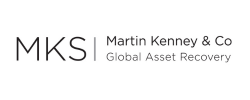Martin Kenney Passionately Describes Fraud Recovery Efforts
Dick Carozza
“I bear witness to how many human beings I cannot count — I have seen their confidence taken from them, their sense of being, their sense of self demolished by deceit, trickery and the most unethical forms of human conduct imaginable,” said Martin S. Kenney, a fraud recovery specialist, in his impassioned keynote address during the Tuesday morning General Session.
Kenney’s outrage against what he calls “grand corruption” or “kleptocracy” has motivated him for decades to use creative ways to uproot bank secrets, freeze hidden assets around the world and return hard-earned money to ordinary victims. For a lifetime of achievement in detection and deterrence, the ACFE presented Kenney with its highest honor, the Dr. Donald Cressey Award.
As an asset recovery lawyer in the British Virgin Islands, Kenney has worked on such diverse cases as Barings Bank’s rogue trader Nick Leeson and a Brazilian-based bankruptcy fraud with losses totaling $8 billion. He’s leading asset recovery for creditors defrauded by Allen Stanford in the second-largest Ponzi scheme in financial history. As co-general counsel to the joint liquidators of Stanford International Bank, his firm is working in the interest of approximately 22,000 creditors from 140 countries who have lost a net capital sum of $4.4 billion. Kenney is managing partner of Martin Kenney & Co., Solicitors, in Tortola, British Virgin Islands.
“What do we do when we meet a victim?” Kenny asked. “We must show leadership. We must, as anti-fraud professionals, be sensitive to their emotional, psychological, financial needs. And the best way to help restore their sense of self-worth and confidence, I have found, is to help them find a way to search for justice.
“Our central task in representing victims of global economic crime and corruption is to secretly locate, define the manner of holding, gather objective proofs of attribution of value — of assets — to pre-emptively, secretly freeze and arrest [the assets] concurrently … in Switzerland, in Papua New Guinea, in Alberta, Canada, in Barbados. … We then engage in a ferociously fought struggle” to recover the fruits of fraud, he said.
Kenney gave some specifics on tackling cases. In part, he and his team:
- Race to the scene of the apparent crime to triage the victim, the core evidence and the facts.
- Identify the measure or the weight of the losses and the names and locations of the apparently responsible parties.
- Map the architecture of the fraud. Where did the money go? In what directions? Was it fragmented?
- Identify where the principal subject of the investigation is located and how he or she lives.
- Launch dual-direction tracing and “following the money” inquiries — forward and reverse.
- Conduct the asset recovery inquiry under the protection of utmost secrecy to avoid evasive action being taken by the targets of the inquiry.
- Pull and critically examine all available open-source data relevant to the forward- and reverse-tracing inquiries.
- Target all relevant confidential banking and company or trust ownership and capitalization information by a campaign of secret, judicially ordered disclosure proceedings.
- Robustly construct the fundamentals of a case imposing liability on a defendant and his dishonest or reckless facilitators.
- Work out where, how and when to sue.
- Construct and execute an asset recovery costs plan and a plan of funding the cost of the process.
- Consider ethical constraints on the conduct of a private investigation.
- Head to the climax: asset freezing, Marevas by letter, freeze orders, attachment orders.
- Conduct the investigation and travel through the criminal process.
Toward the end of his keynote, Kenney quoted Aristotle: “At his best, man is the noblest of all animals; separated from law and justice he is the worst.” Kenny and his team are fighting to help reunite law, justice and the noble animal.
Find more conference coverage at FraudConference.com.
